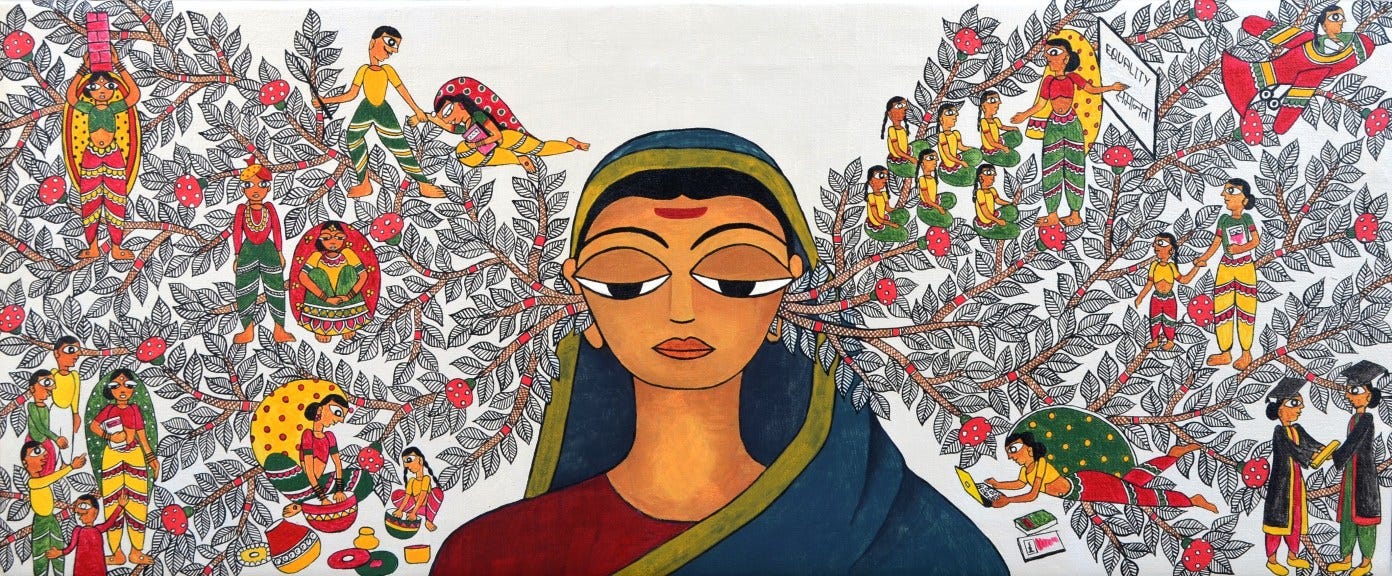Dalit 101
For my non-Indian friends
Almost two years back, on June 30th of 2020, California’s department of fair employment filed a federal suit against Cisco alleging “managers discriminated against [an] engineer because he is Dalit, formerly known as ‘Untouchable’”1. Coming right on the heels of George Floyd’s death and subsequent protests, the lawsuit received wide coverage in the US media, and exposed a discrimination that most American tech workers were oblivious to. Naturally, there was curiosity on who are “Dalit”, who isn’t, and why it engenders discrimination. As a dalit myself, this post is my attempt to provide briefest introduction of this singular phenomenon from the Indian subcontinent.
Varna system
More than three millennials back, one of the most sacred Hindu text, Rigveda, was composed2 that stratified Hindu society into four distinct hierarchical groups3. This is commonly referred to as Varna system with each group called a Varna.
Since then, two societal transformations have evolved this system into its current state of thousands of coexisting castes in India. These are
Each Varna splintering into thousands of distinct sub-varnas within the bounds of their original varna
Sub-varnas morphing into jati or caste where membership is granted exclusively by birth. This is enforced by strict endogamy in the sub-varnas. 4
So Dalits must be the labor caste, right?
As dalits are stated to be the lowest in the totem pole of castes, you aren’t wrong to think so, but it isn’t correct. The varna system left out one group of people so foul to even deserve their own varna. These were the achuts, literally untouchables, and were called so because any contact with them would cause a Caste Hindu5 to lose their religious purity. Dalit, a Sanskrit word for broken or scattered, is a term adopted by the untouchables in modern times to refer to themselves. Combined with the Varna system, the social hierarchy would look something like below.
You may ask, what was the occupation of dalits that made them so inferior to the Caste Hindus? Largely, it fell in two categories
Working with animals carcass, especially cows, for tanning, manufacturing leather, and making shoes
Cleaning human excreta from sewage systems or homes of Caste Hindus
Discussions on why these occupations were singled out is beyond the scope of this post. Most Indians still work in occupations that belongs to their caste. This system imposed social segregation on dalits for centuries limiting their interactions with others to those that were absolutely vital for them to do their job. As a side note, one of my great-grandfather used to repair shoes.
Source of discrimination
When India achieved its independence in the mid-20th century, the new constitution abolished the practice of untouchability and added affirmative actions for dalits. These reforms are starting to show results. Still a minuscule percentage, but a new generation of dalits are entering modern economy. This was possible due to opportunities they received from their economically improved parents who benefitted from their new-found rights in India’s constitution. Some even went beyond their country’s borders and found high skilled jobs in big tech companies, though their casteist Indian coworkers don’t make it easy.
Among the many reasons that some caste Hindus discriminate against dalits are
Deep rooted belief that dalits are subhuman incapable to do a high skilled job
Consider them filthy and expect them to stay segregated
Resentment for using affirmative action to enter college on a seat that a Caste Hindu could have used
Since the Californian lawsuit, many dalits have approached different organizations to share their horror stories but most have stayed anonymous6. Unlike race, it’s easier to hide your caste, especially in a new country. Many dalits change their official last name to something common enough that it’s hard to identify them. Some retain their last names and hope their manager isn’t from the same region in India who could tell their caste. I have taken the former route. The challenge though is to force a smile when your Indian coworkers use casteist slurs because you know it will be worse if they find out.
Acknowledgment
The banner image is a painting Mai, literally mother, by dalit artist Malvika Raj7. It’s a painting of Indian educationist Savitribhai Phule whose birthday is celebrated as Teacher’s day by dalits in India. Ms. Phule was a social reformer in 19th century and broke both caste and gender barriers when she started teaching dalits, including girls.
“Beyond the Flight of the Falcon”, Michael Witzel
Purusha sukta, 10.12, Rigveda
Castes in India: Their Mechanism, Genesis and Development by Dr. B. R. Ambedkar. http://www.columbia.edu/itc/mealac/pritchett/00ambedkar/txt_ambedkar_castes.html
Caste Hindu is a common term to refer those who have a membership in the Varna system




Some additional points:
1. Untouchables are also not considered a hindu; depriving them the benefits/dignity of having a religion (whatever they are). Gandhi tried to bring them into the hindu fold by relabeling them as "harijan", and considering them a Shudra. Both these "benevolent in his own mind" acts were seen by Ambedkar for what they were -- continuation of upper-caste supremacy by any other means -- and he was a life-long opponent of Gandhi.
2. The "I'm higher than you are" attitude is not limited to Brahmins. It has gone fully fractal. Many untouchables practice some form of it (dhobi higher than bhangi, etc.) This deep entrenchment of caste discrimination will be hard to eliminate.
3. Generally speaking, most Indians, including the lower castes and untouchables are not knowledgeable of their own history. Even if literate, they have absorbed whatever self-serving government or priestly propaganda filtered down to them as they grew up.